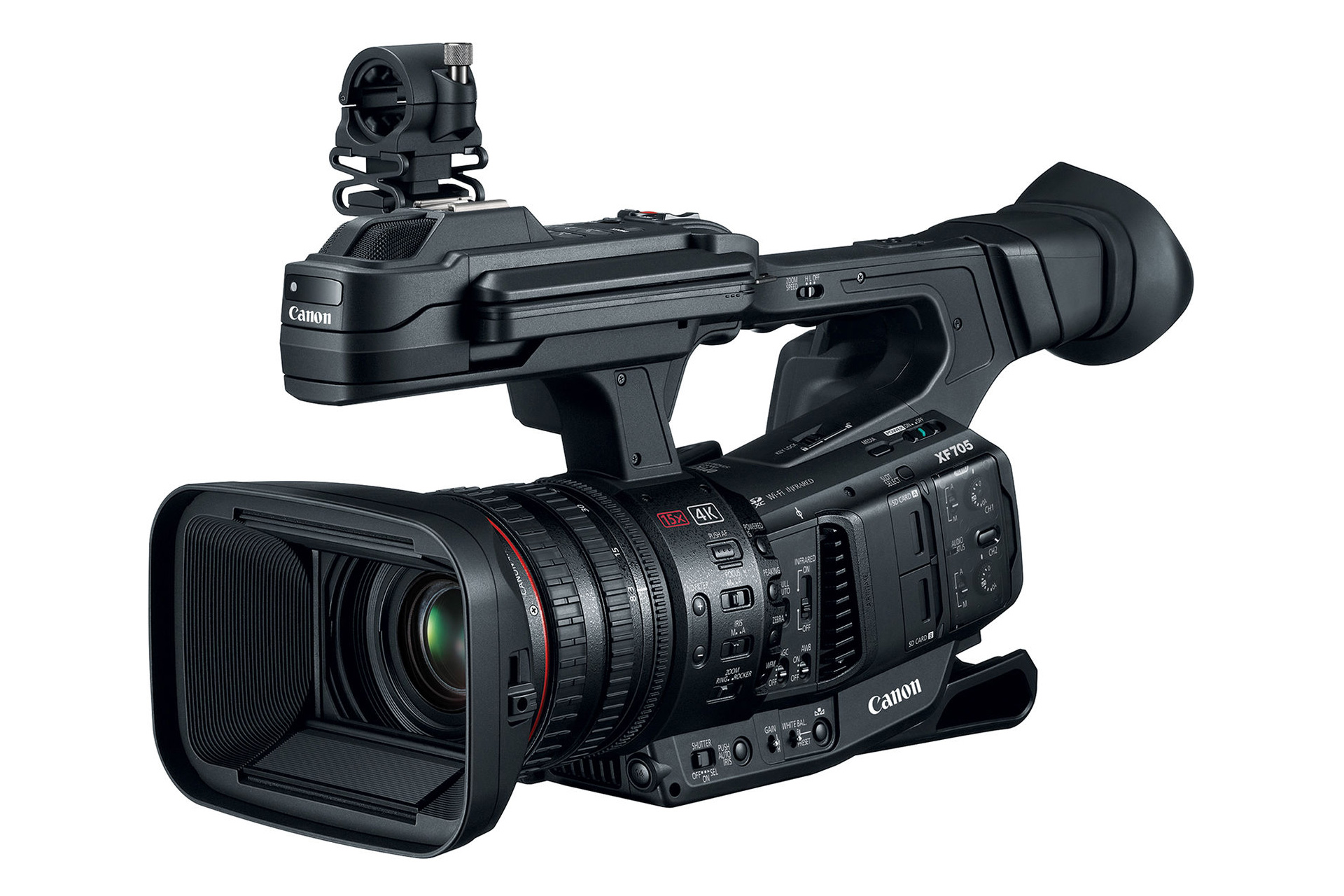Camcorder Ups Pro Feature Set with Full HD Recording at 120p, H.265 Codec Support, and 3x Lens Rings
Canon announced the new XF705 fixed-lens camcorder in time to show it off at IBC 2018, offering an upmarket version of the XF405 that adds 12G-SDI connectivity, support for HLG and PQ HDR encoding, and — for the first time in a Canon camcorder — H.265 encoding.
Featured for the first time in a Canon XF-series camcorder is Canon Log 3 recording, generally found only in the EOS series of cinema cameras. That’s not important to users who want a broadcast-ready picture straight out of the camera, but it will be a boon for users who want to preserve latitude for color-grading in post-production.
Geared to ENG, outdoor event coverage, sports and documentary production, the XF705 has a 15x optical zoom lens with five-axis optical image stabilization. (A 0.8x wide attachment and 1.5x tele converter are both available.) The camera has a 1-inch UHD image sensor, Canon’s Dual-Pixel CMOS autofocus system, and ND filtering built in, with three button-controllable settings — 1/4, 1/16, and 1/64.

Canon XF705 resolution, color format, and codec chart.
Source: Canon USA
When the camera launches, the H.265/HEVC codec will make it a solid option for UHD acquisition as well as capturing high-speed HD action at 120p. Recording to SD cards, it will capture 10-bit YCC 4:2:2 UHD (3840 x 2160) footage at up to 59.95p with a maximum bit rate of 160 Mbps, or 10-bit YCC 4:2:2 1080p at up to 120p with a maximum bit rate of 180 Mbps.
The camera will record 8-bit YCC 4:2:0 1080p at up to 59.95p out of the box, but the video bit rate will be limited, at first, to 45 Mbps. A forthcoming firmware update will enable 8-bit YCC 4:2:0 UHD recording at 29.97p and 160 Mbps, as well as 8-bit YCC 4:2:0 recording at 120p and 180 Mbps. Confused? The chart above spells it out a little more understandably.
4K UHD output (10-bit 4:2:2 at up to 59.94p) is enabled over HDMI 2.0 for easy connection to a portable monitor/recorder, while the 12G-SDI output delivers compressed (HEVC or AVC) 4K 60p output or full HD 60p with a single cable, for display on a broadcast monitor or for recording to 10-bit 4:2:2 Apple ProRes or Avid DNx on an external device. Two XLR inputs featuring independent audio level control are offered alongside a stereo minijack mic terminal and an internal stereo mic. Audio recording is four-channel 24-bit 48 kHz LPCM. Remote control can be enabled through Canon’s RC-V100 unit.
Built-in support for both HLG and PQ formats will make the XF705 a good future-proofing choice for shooters who want to make sure they can meet emerging demands for HDR delivery. The camera has an Auto Iris feature that works with standard or spotlight metering options, which should help DPs keep hot spots in the image under control. HDR can be recorded to an internal SD card simultaneous with SDR recording to an external recorder, and exposure levels can be adjusted to dial in the appropriate positive or negative gain difference between the two.
The XF705 is meant to improve on, but not replace, the lower-priced XF405 with value-added features including its HDR support, 12G-SDI output, and a lens with three control rings (zoom, iris, focus) rather than the single ring on the XF405.
The Canon XF705 is expected to ship in December with a MSRP of $6,999.
Canon: usa.canon.com

